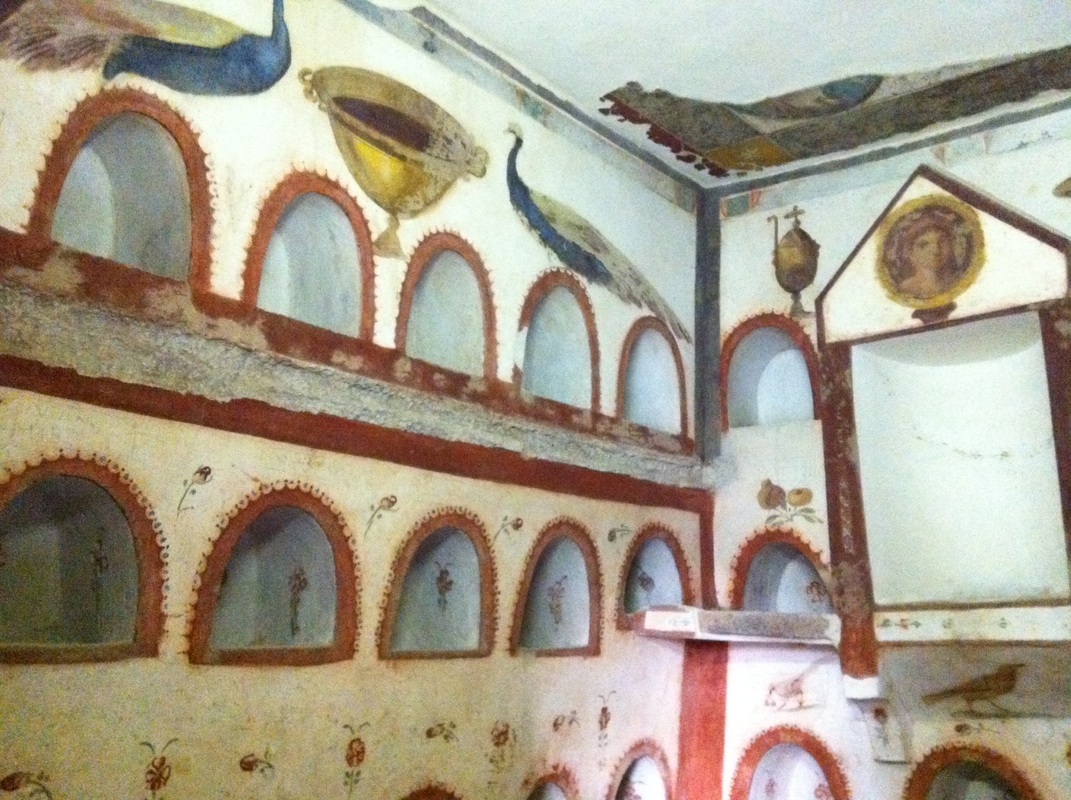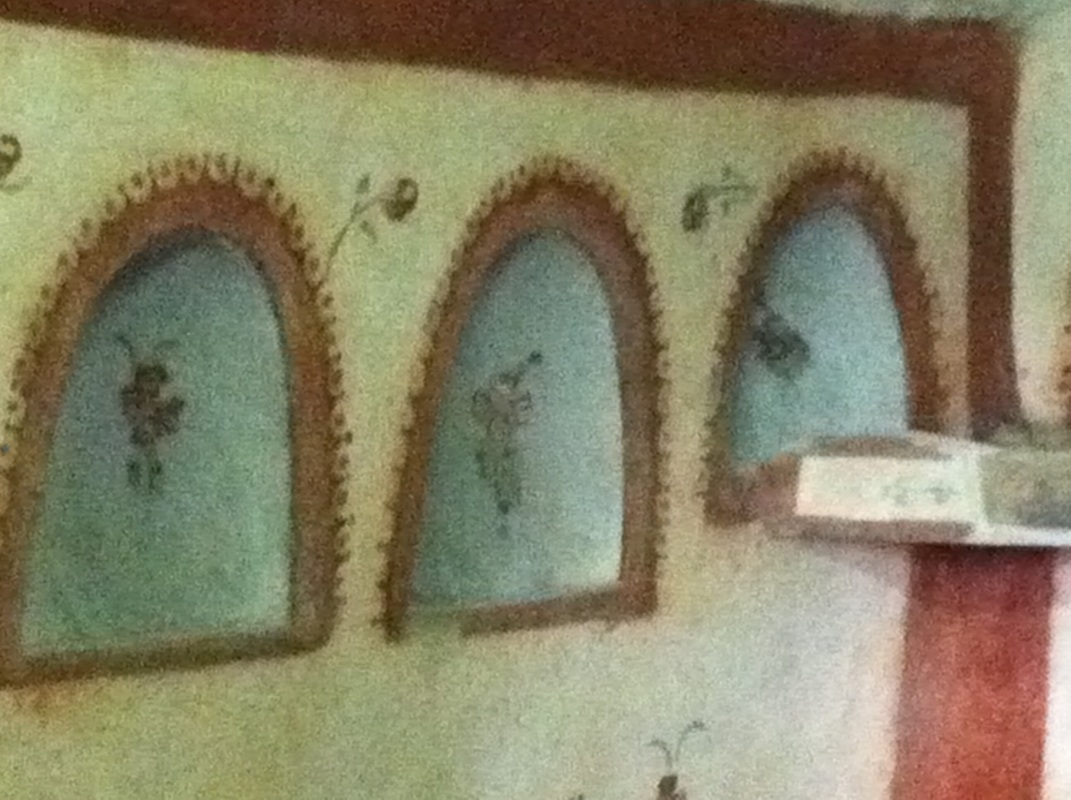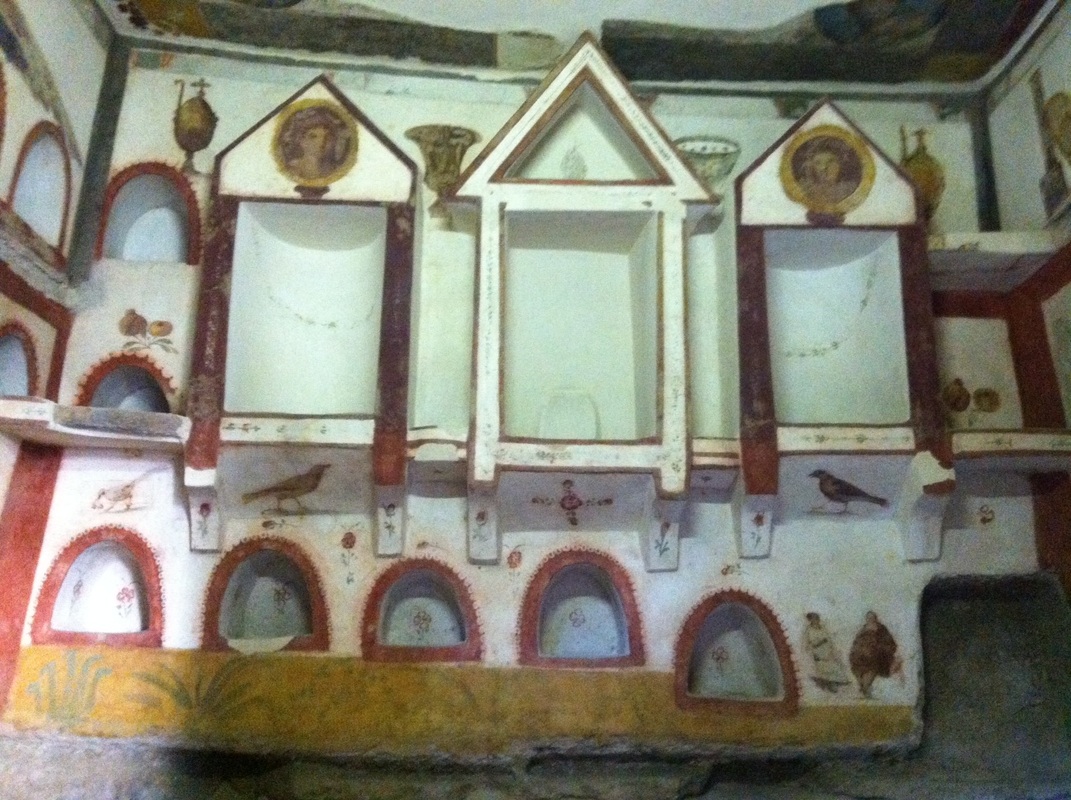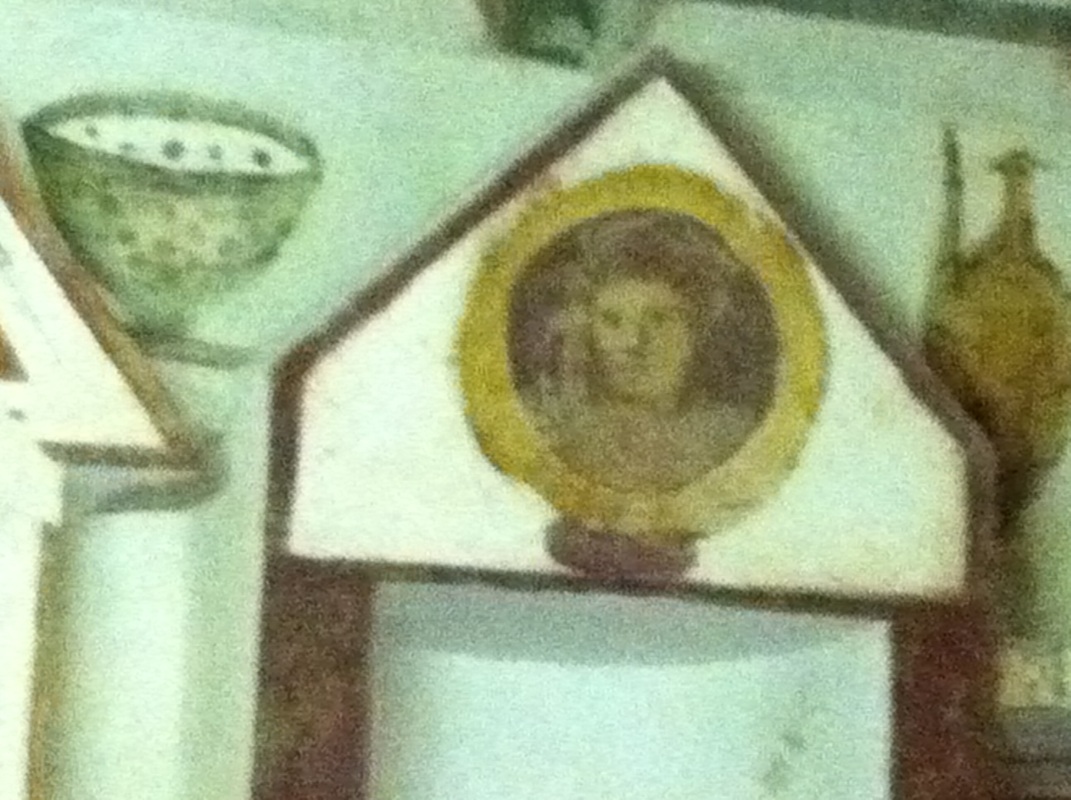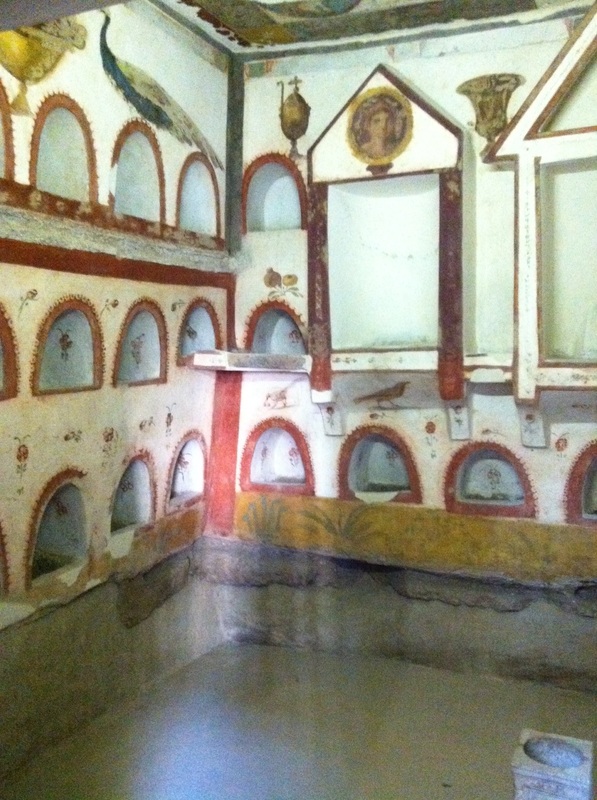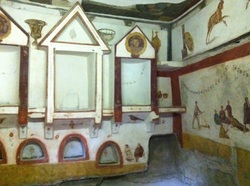
It was excavated inside the tufa stone and was part of a vast necropolis area dating from the end of the first century A.D. until the third century A.D.
| The whole block of tufa was moved to the Museo delle Terme, part of the Museo Nazionale Romano, in consideration of the richness of its decoration. It can be found in the Aula X of the Baths of Diocletian – National Roman Museum (opening hours: 9am – 7.45pm. closed Monday). The internal part of the sepulcher, completely painted, has small dimension and was probably done for a single family. First intended as a columbarium reserved for the rite of cremation, was after adapted for the deposition of buried, with the excavation of some graves in the floor and the placement of two sarcophagi. Inside the tomb, completely painted along the walls are excavated the niches containing the ashes of the deceased contained in cinerary ollae. The ollae were covered with little marble plates with small holes in their centre, where drinks were poured. The three niches facing the entrance were probably intended to house the tombs of the most important people, in two aedicule on the sides there are two young people’s portraits: perhaps the children of the owners. Above some of the little niches there are graffiti on the plaster with the names of the deceased. Symbols and figured composition connected with the theme of death and afterlife are represented on the walls: birds, fruits, peacocks, flowers and vases . On the right wall there’s a representation of a banquet that alludes to the pleasures waiting for the deceased in the afterlife. Interesting is the marine scene with two figures waiting for boat: symbol of the soul ferried in the afterlife. A precious little jewel which dates back to the second century A.D. Terme di Diocleziano Museum |
